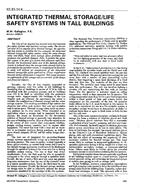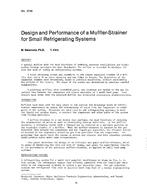A long-term monitoring program was implemented at a historical structure to characterize exterior wall assembly performance and interior operating conditions prior to complete renovation. The purpose of the monitoring system was to analyze the effect interior operating conditions have on historic building enclosure components, which include sandstone veneer walls, exposed concrete walls, skylights, and art deco aluminum-frame glazing systems.
The monitoring system consists of specifically positioned temperature, relative humidity (RH), surrogate moisture content, pressure, and condensation sensors. The sensors are embedded in select wall assemblies, wired to a remote central data acquisition system, and uploaded online for review and analysis in real time.
The first year of data revealed several interesting facts about building enclosure performance and building operation: past renovations negatively affect the hygrothermal performance of the sandstone clad wall assemblies, condensation occurs frequently on glazing assemblies, interior wall surface temperatures are conducive to condensation formation behind displays, the mechanical system creates large pressure differences of >±100 Pa under normal operation, and tight control of temperature and RH is a constant challenge.
The measured data were used to calibrate hygrothermal modeling software (WUFI 4.2), and analysis was performed to determine the potential hygrothermal effects of adding insulation to the existing wall in order to develop appropriate design solutions for the upcoming renovation.
Suggestions for implementing large building monitoring programs are provided, as are uses of monitored data in historical building renovation design.
Citation: Thermal Performance, International Conference, 2010
Product Details
- Published:
- 2010
- Number of Pages:
- 11
- File Size:
- 1 file , 4 MB
- Product Code(s):
- D-BUILDINGSXI-142


